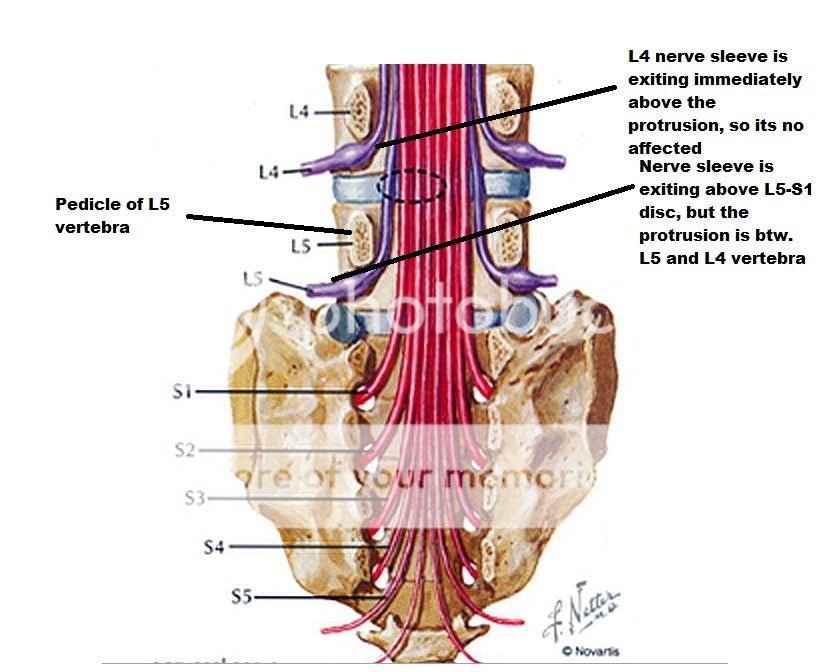- Joined
- Jan 18, 2012
- Messages
- 3,880
- Reaction score
- 1,676
Another basic MS1 anatomy concept that I'm struggling with:
Spinal nerves C1-C7 exit above their corresponding vertebrae, so a C5-C6 disc herniation would impinge on the C6 nerve route.
All of the other spinal nerves exit below their corresponding vertebrae. What I don't understand is why an L5-S1 disc herniation therefore impinges on S1, not L5. Wouldn't L5, not S1, lie at the L5-S1 disc level?
Spinal nerves C1-C7 exit above their corresponding vertebrae, so a C5-C6 disc herniation would impinge on the C6 nerve route.
All of the other spinal nerves exit below their corresponding vertebrae. What I don't understand is why an L5-S1 disc herniation therefore impinges on S1, not L5. Wouldn't L5, not S1, lie at the L5-S1 disc level?



